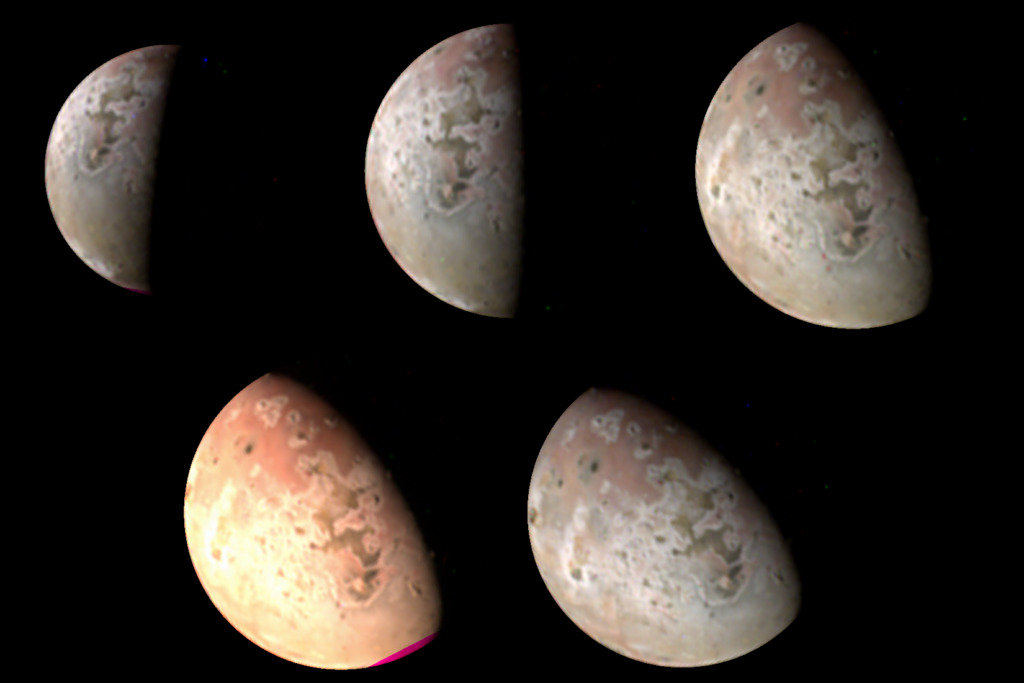On March 1, 2023, the Juno spacecraft flew at a distance of 51,570 km from Io. This provided an opportunity to get the best images of the surface of the most geologically active body of the Solar System during the entire mission. Their resolution ranges from 43 to 34 km/pixel.

Io is the third largest moon of Jupiter. Its diameter is 3660 km. Io is famous for its volcanoes. There are hundreds of active volcanoes on its surface, which continuously erupt, modifying its landscape. The length of their lava flows can reach hundreds of kilometers. Also on Io there are whole lakes filled with molten sulfur.
Most of the dark spots that are visible in the Juno images are the consequences of eruptions. Among them is the region called East Girru. The last time it came into the field of view of the New Horizons probe was in 2007. At that moment, the East Girru is in the stage of another eruption, but has not yet ejected new lava.
The Juno images made it possible to identify a new lava field on the outskirts of East Girru with a total area of 3,200 km² (which is quite a bit by Io standards), which did not exist during the New Horizons visit. According to planetary scientists, it could have formed during the eruption recorded at the end of 2021.
Juno also recorded a change in the color of an irregularly shaped volcanic crater known as Chors Patera. Compared to 2001, when it was last photographed by the Galileo apparatus, it turned very red. This color change indicates the presence of sulfur compounds formed as a result of active high-temperature volcanism. Some of the dark spots near the Io terminator line (the border between the day and night side) may be shadows from the mountains. According to the calculations of planetary scientists, the height of one of them reaches 5500 meters.
Recall that at the end of 2023 Juno will visit Io again. This time, the spacecraft will pass at an altitude of only a few hundred kilometers above its surface, which will make it possible to get much more detailed images of the volcanic moon.
According to https://www.missionjuno.swri.edu
Follow us on Twitter to get the most interesting space news in time
https://twitter.com/ust_magazine

